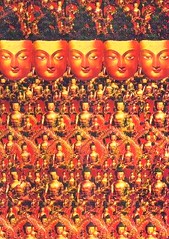
旋風腳 (Xuanfengjiao - Tornado Kick) is gotta be one of the coolest jump kicks we get to learn in Level 2. I could watch the veteran Level 2 folks do the tornado all day. It's like you walked into a old-school kung fu movie when there wasn't any use of wires yet. It's a combination of speed, angular momentum, strength, jumping ability and sheer insanity.
Khalid and Heng De taught it to the new Level 2's this week and I'm still recovering from the storm. The basis for this move is 騰空翻腰 (Tengkong fanyao), my long time nemesis. You have to be able to use the angular momentum from the spin to perform a 里合腿 (LiHeiTui) and land on the same leg you jumped from. Whoa! Crazy! Now I know why 師父 (Shifu) is always telling us to spin faster and jump higher. It's to prepare us for jump kicks like these. That first step is now even more important. It is the start of a Tornado!
Last night, right after Level 1 class, I was practicing my tornado when Khalid saw me. He nodded and smiled and started to do it too. Next thing you know, we got a mini Level 2 Class going. Chris E., Heng Xu, and Rob all joined in with Level 1's standing on the sidelines watching. They busted out all the cool jumps and were dazzling, while I fell on my face and knees repeatedly. I didn't care though. I landed my first tornado! Can you feel it? Can you feel the storm rising? Yeah! YEAH!!






